Nine Places to Enjoy Naturally Green Waters This St. Patrick’s Day
Leave the dye behind—these watery wonderlands are 100 percent natural
/https://tf-cmsv2-smithsonianmag-media.s3.amazonaws.com/filer/cd/df/cddf19e8-f681-4541-82b2-48b55966db7a/42-78805328.jpg)
Since 1962, a crew in Chicago takes to the river once a year, dumping in 40 pounds of an orange powder that, when it hits the water, turns bright green. It’s a St. Patrick’s Day tradition anyone can enjoy—especially when followed by a parade and a green beer. The dye itself is an environmentally friendly chemical compound—although if you ask some of the more sarcastic locals, it isn’t needed because the river is always a peculiar, if less flourescent, shade of green.
But by turning their river green, Chicagoans are simply mimicking a phenomenon that happens naturally in the wild: bodies of water that are green all year long. These natural wonders run from neon to bright jade to a deep emerald—and they gain their St. Paddy's-worthy hues in different ways.
Rick Stumpf, an oceanographer with the National Oceanic and Atmospheric Administration, says that green shades aren’t from just one source. Rather, green water comes from a mix of chemical, biological and optical sources.
“You could potentially find chemical ones where there’s volcanic activity, because weird stuff in the water tends to happen most there,” he tells Smithsonian.com. “On the biological side, the extreme case would be cyanobacteria blooms, which are really thick and bright green. It’s obvious pond scum. But you can also get other algae in nutrient-dense water, like chlorophytes that can grow in the ocean. You put a little bit of that in a place and the water will have a greenish tint to it.”
Wai-O-Tapu in New Zealand shows color from volcanic activity—this green is milky and yellowish, caused by not-quite-dissolved particles of sulfur floating in the water. On the other hand, Stumpf explained, Valle Verzasca in Switzerland shines clear jade green because chlorophytes and benthic algae underneath the water reflect green light. The color on the surface also reflects the surrounding steep tree-filled slopes.
One of Stumpf’s favorite places to spot green water is in Florida Bay near the Keys. The water in many places in the Bay looks like “skim milk,” he says, due to a high occurrence of carbonate mud. But on a windy day, sunlight shines into the water and bounces back a green hue from sea grass a few feet down on the bottom.
“It looks like you have a vanilla milkshake that you put green food coloring in,” he says. “You’re not actually seeing the grass, but rather a greenish tint where the grass is.”
Instead of crowding onto a bridge to watch a river change color artificially, why not head out to one of these nine naturally green locales?
Wai-O-Tapu, New Zealand
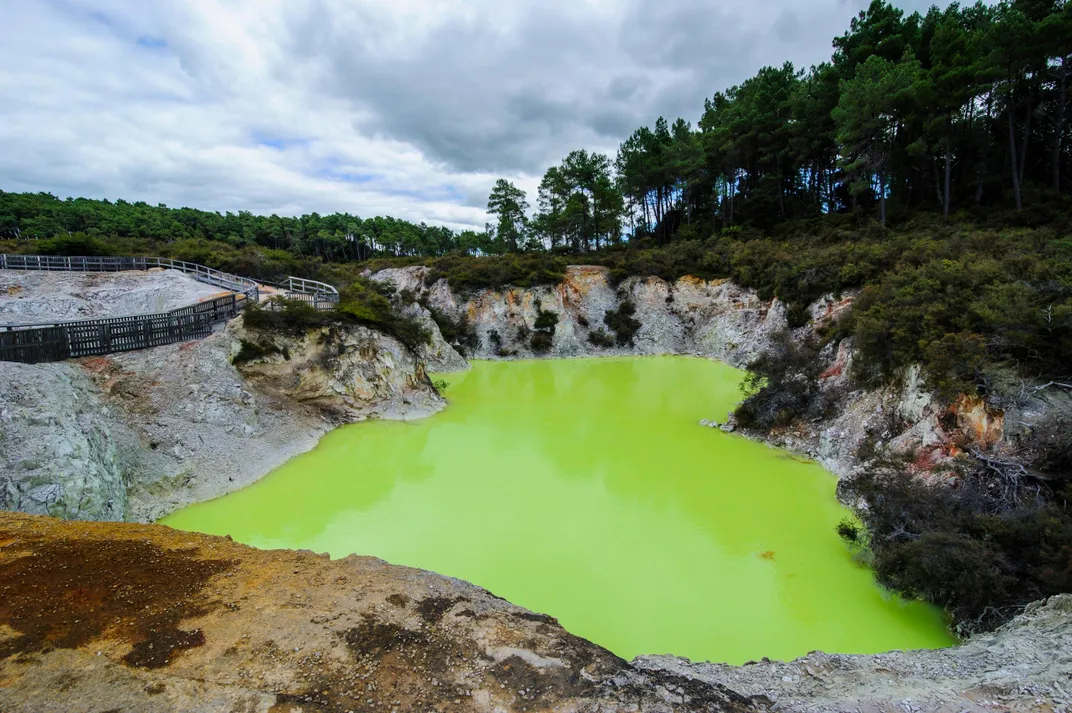
Wai-O-Tapu is more than just this one pool—it’s an entire watery wonderland filled with some of New Zealand's most colorful spots. Everything in the active geothermal area was caused in some way by volcanic activity. The green geothermal landscape is extensive and marked trails lead visitors on hikes around its natural hot springs and mud pools.
Lake Carezza, Italy
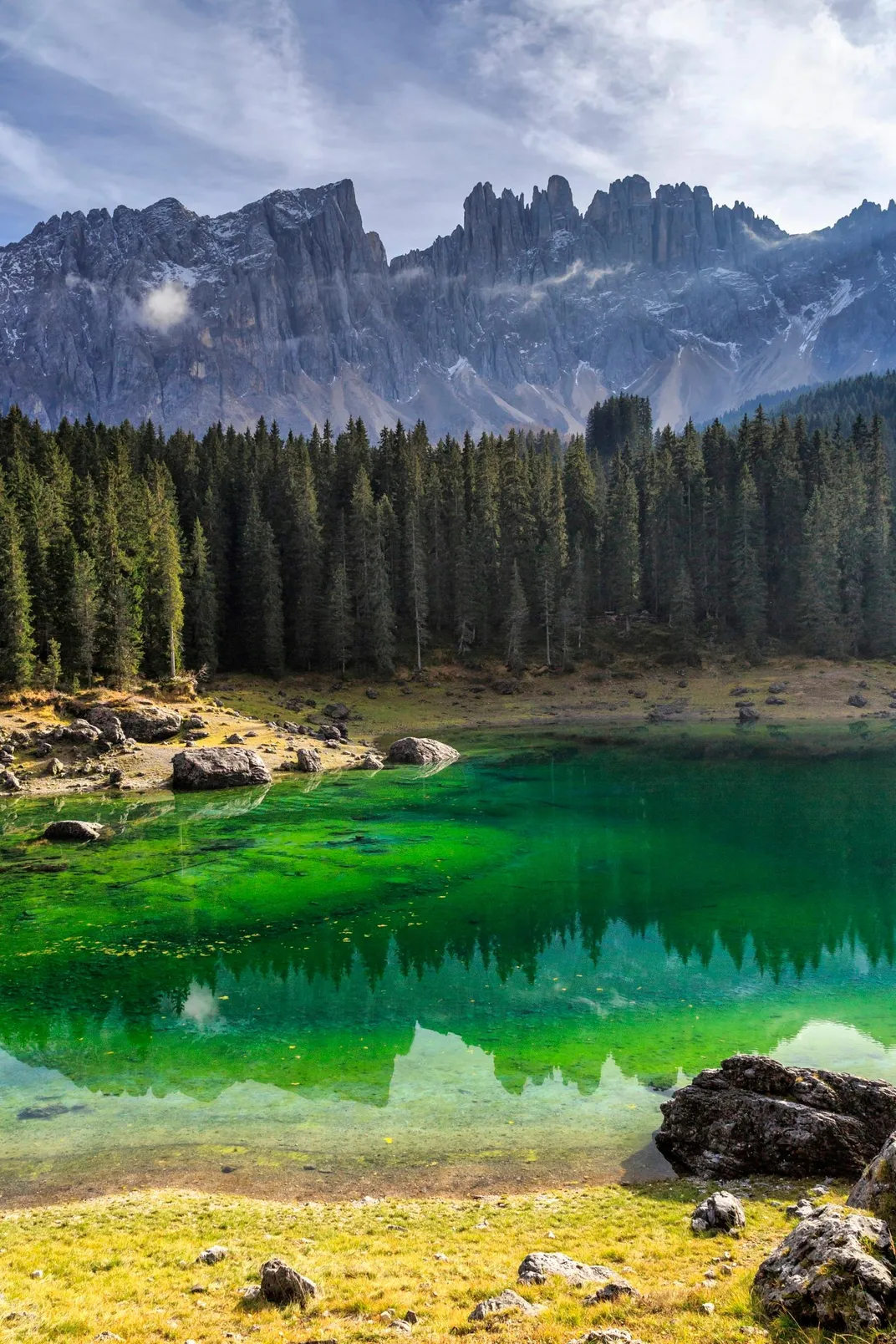
In Italy’s Dolomites mountain range, the colors in Lake Carezza, nicknamed the “rainbow lake,” shift from blue to green to purplish, reflecting the sky, forest and towering mountain range. The lake is fed by a nearby subterranean spring, and local Ladin folklore says the hues are the work of a rainbow made by a sorcerer marauding as a jewelry salesman to trap a beautiful water nymph. When the nymph discovered the trap and disappeared (the sorcerer forgot to put on his disguise), the lovesick sorcerer smashed the rainbow into colorful pieces that fell into the water.
Cathedral Beach, Galicia, Spain
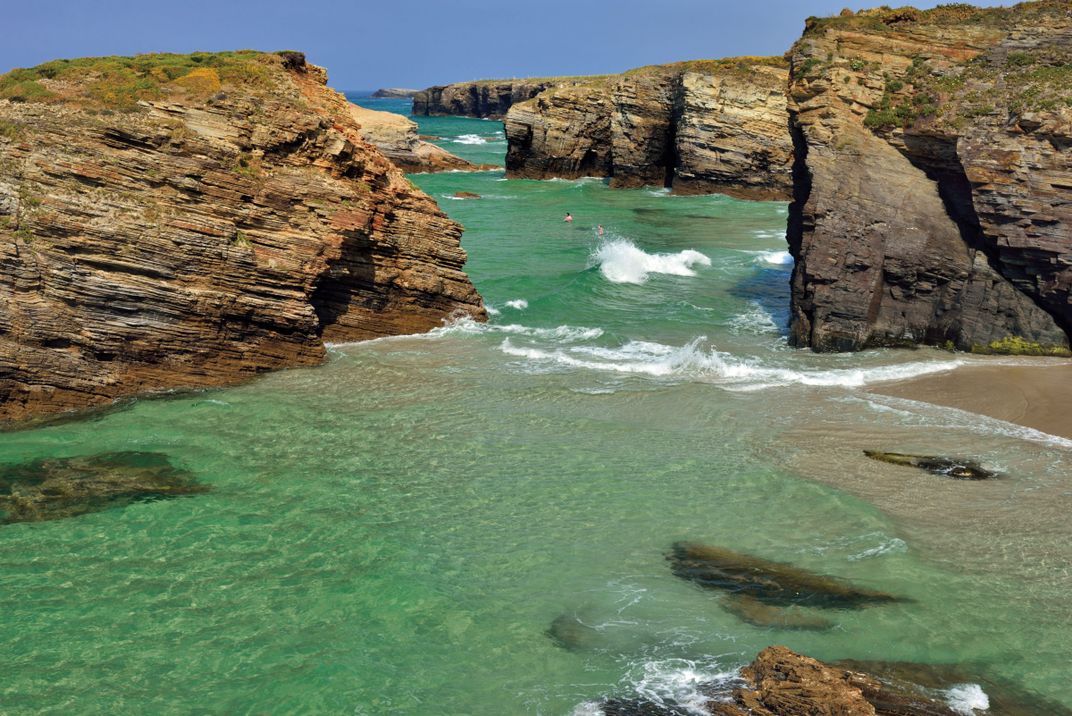
Arched and vertical rock formations and glassy green water make this one of Spain's most beautiful beaches. But its appeal is about the chase, too: Cathedral Beach is only accessible in its entirety at low tide, when its caves can be explored by walking over sand bridges.
Valle Verzasca, Switzerland
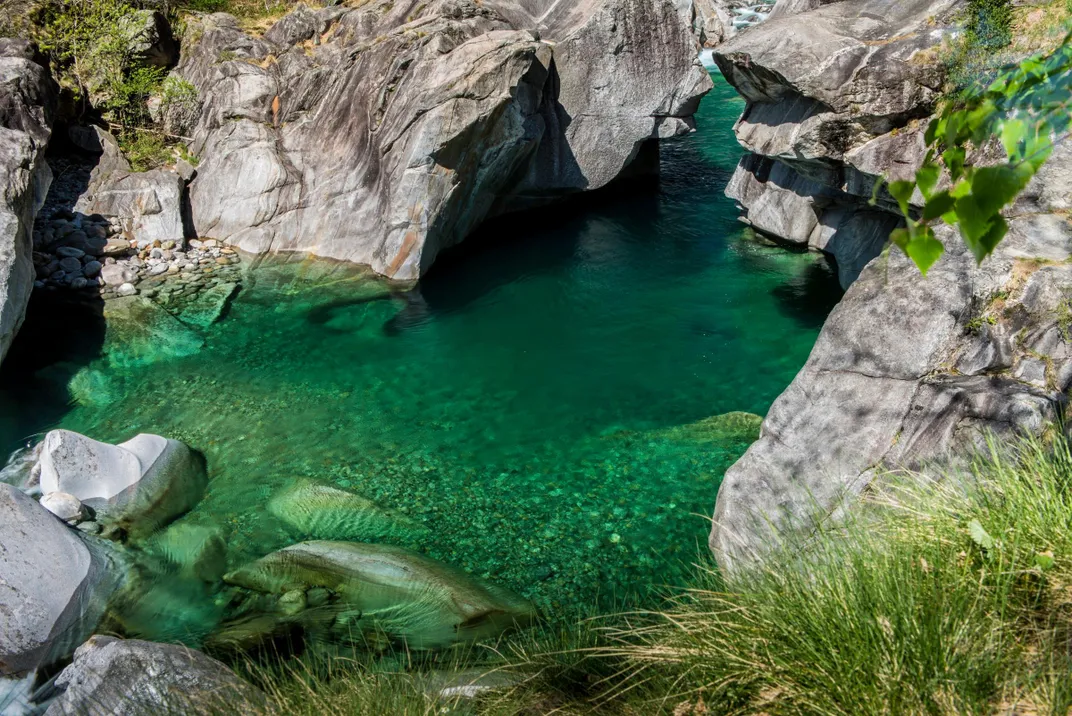
This valley in southern Switzerland is the perfect example of a color effect that's both biological and optical. Trees above the water reflect brilliant green, and so do organisms under the surface. The result is an otherworldly shade of emerald. The water's color isn't the only thing that attracts visitors: Adventurous travelers can try the 007 Jump, a 220-meter-high bungee jump popularized by James Bond.
Ambergris Caye, Belize
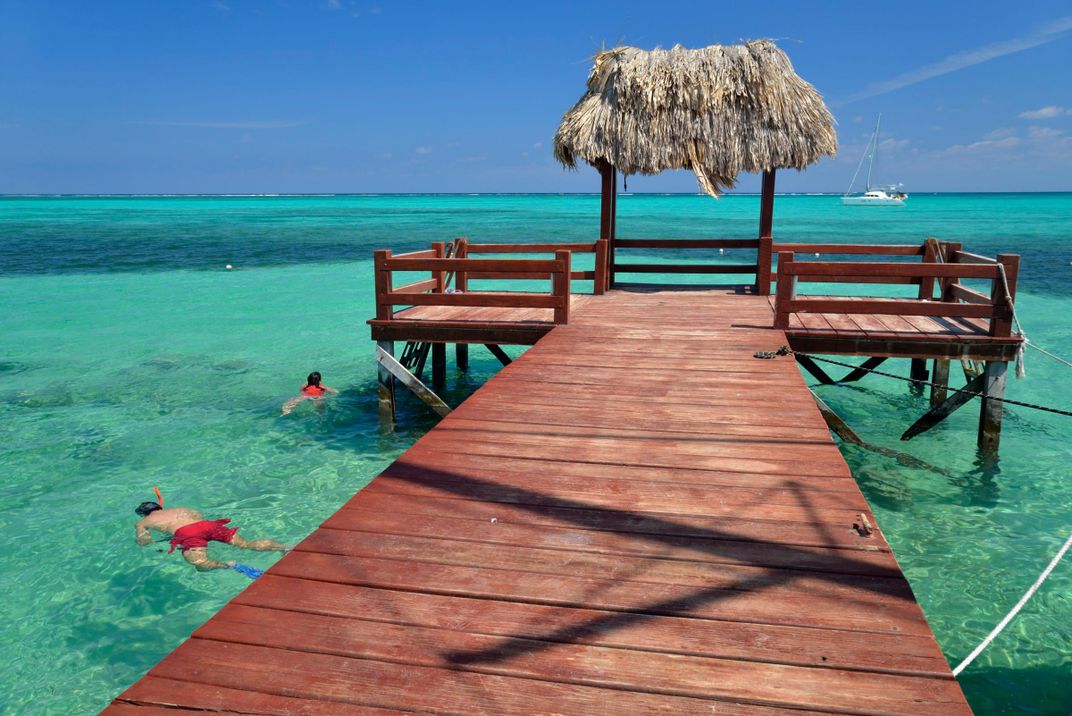
Ever since Madonna "dreamt of San Pedro," Ambergris Caye has been nicknamed "La Isla Bonita." It lives up to the Material Girl's tribute with a tropical paradise vibe and is one of the main stops on any tourist’s trip to Belize. Shallow waters at the shore combined with bright Caribbean sunlight give off that iconic sea-green hue. Nearby, visitors snorkel, dive and swim or visit the Belize Barrier Reef, a Unesco World Heritage Site that's the world's second-longest reef system and the northern hemisphere's longest.
Blue Spring State Park, Orange City, Florida
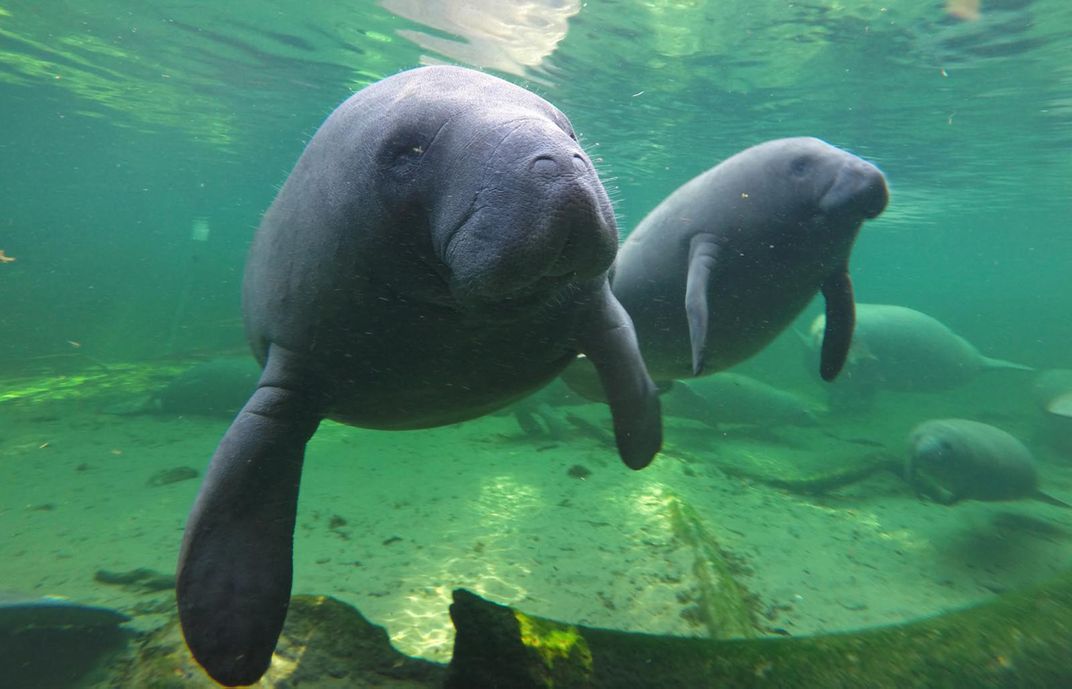
The green waters at this park are manatee heaven—not only is Blue Spring a designated manatee refuge, but several hundred call the park their winter home between November and March. Every year, manatees head for its waters when the St. Johns River gets too cold. Though it’s against the rules to swim or dive with the manatees, they can be observed from one of the overlooks or a live webcam.
Quilotoa, Ecuador
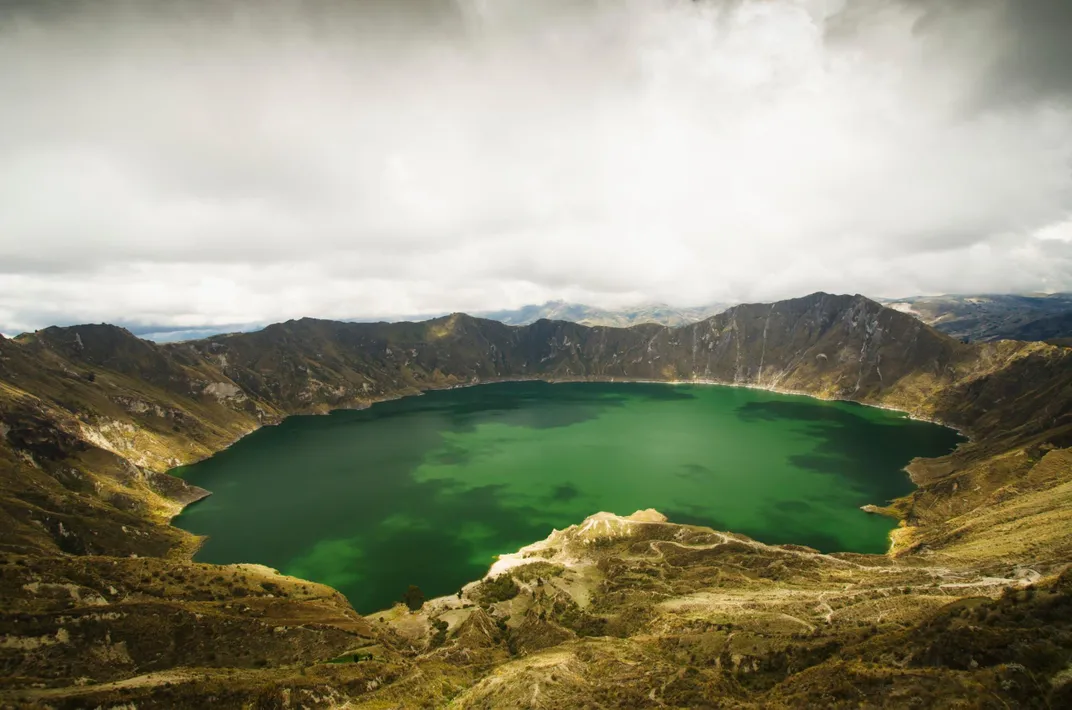
About 800 years ago, a massive eruption created this lagoon when a volcano above collapsed. Geologists estimate that it's at least 820 feet deep—although locals say it’s bottomless. Quilotoa's water is mineral-rich and changes color based on the season, ranging from green to an almost yellow hue. But there's danger lurking in the vivid water: Volcanologists monitor it periodically for limnic eruptions, rare disasters in which large amounts of CO2 are belched into the atmosphere by crater lakes.
Barkley Sound, British Columbia
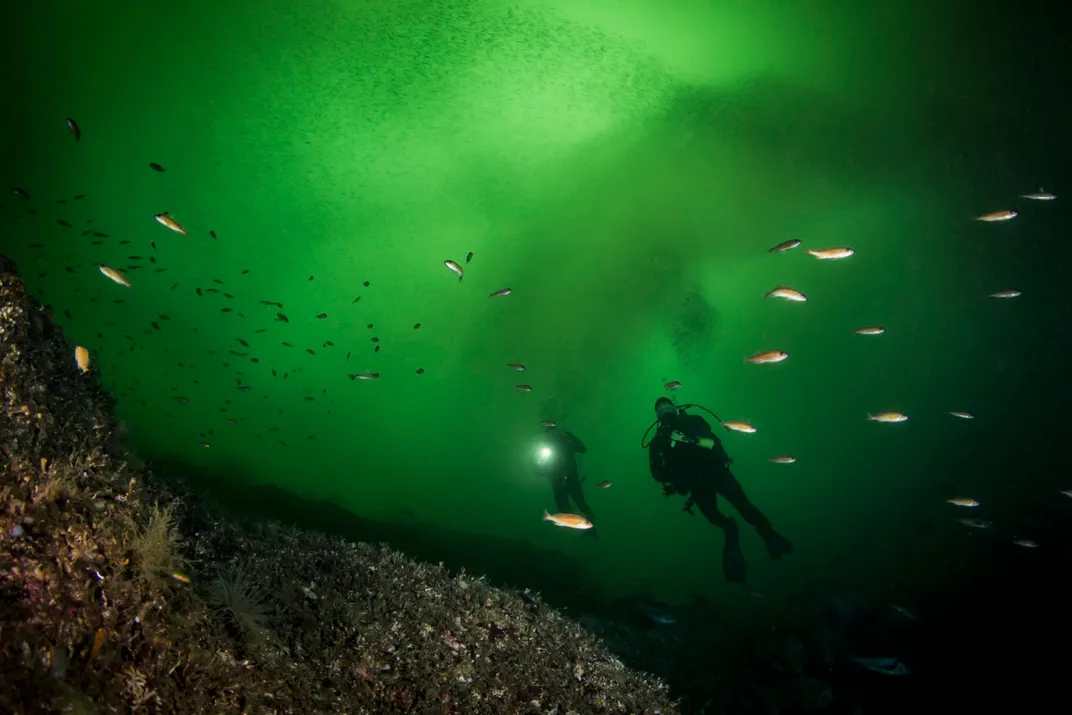
Tourists flock to Barkley Sound for a bevy of outdoor activities, including fishing, diving, kayaking and hiking. It’s a major path for migrating salmon in the summer. Green kelp forests and nutrient-rich water draw a wide variety of other marine life, too; visitors can spot whales, octopus, sea otters and seals on the sound.
Abyss Pool, Wyoming
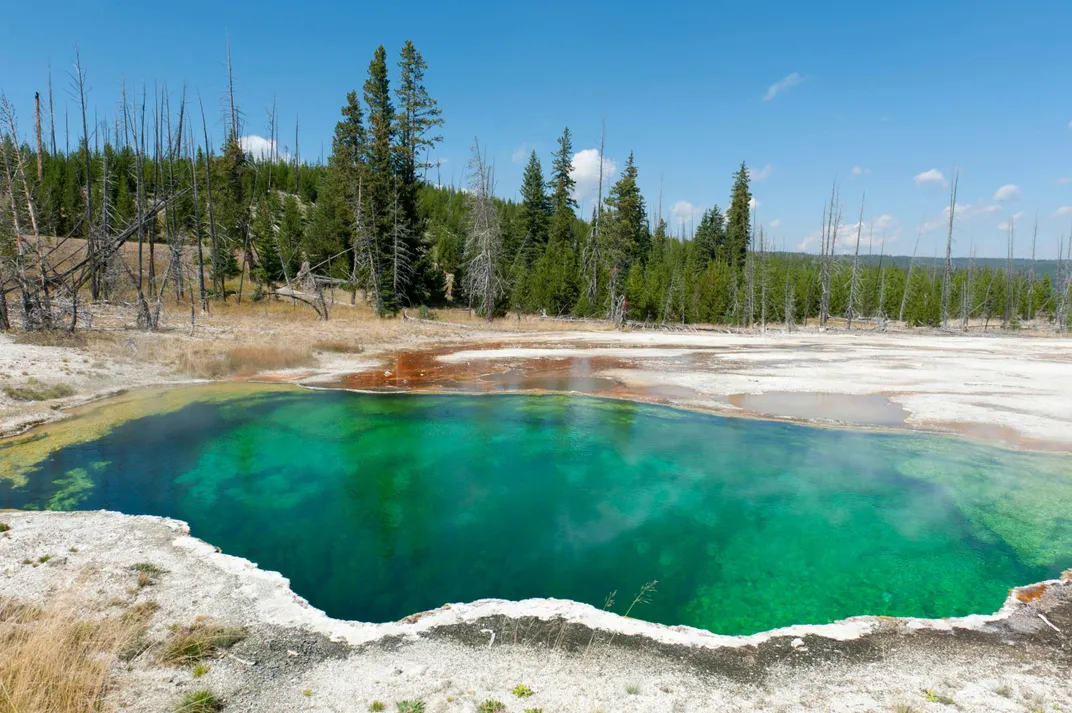
Heading into the abyss has never been so beautiful: This pool in Yellowstone’s West Thumb Geyser Basin is one of the national park's deepest. Right now, the temperature sits at 172 degrees, but it’s thought that it was once even hotter. People throwing in coins and other debris may have caused the source vent to plug, lowering the overall heat index. The distinct color is caused by a mixture of water depth and algae.
Planning Your Next Trip?
Explore great travel deals
Smithsonian magazine participates in affiliate link advertising programs. If you purchase an item through these links, we receive a commission.
/https://tf-cmsv2-smithsonianmag-media.s3.amazonaws.com/accounts/headshot/JenniferBillock.png)
/https://tf-cmsv2-smithsonianmag-media.s3.amazonaws.com/accounts/headshot/JenniferBillock.png)